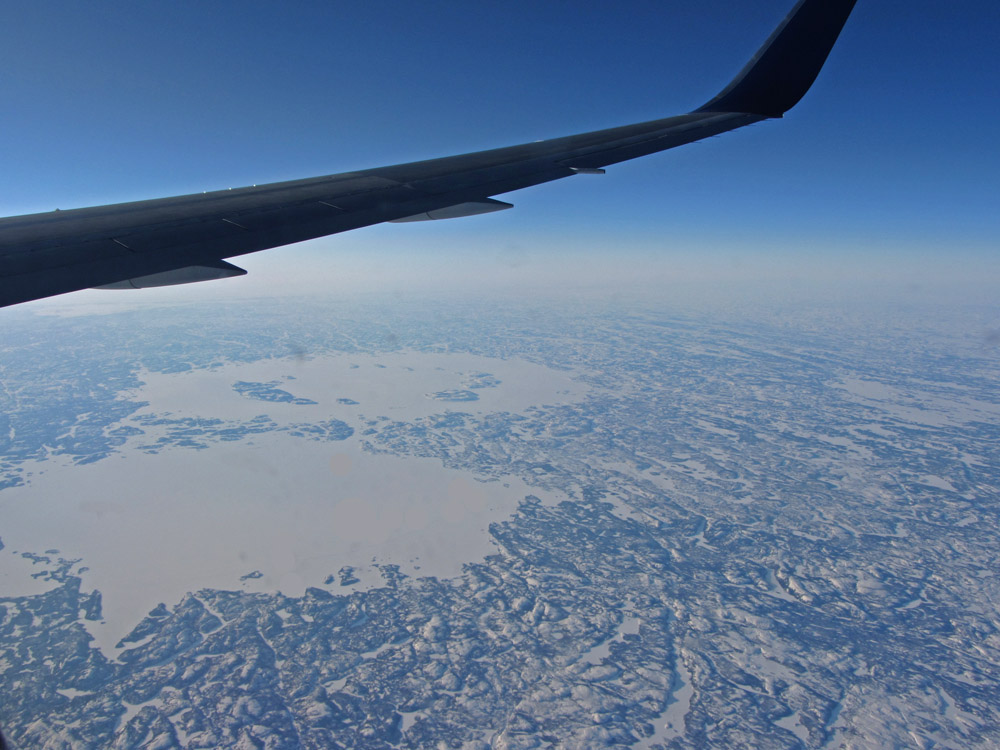Difference between revisions of "March 20, 2012"
(Created page with "__NOTOC__ =A Moonlike View= <!-- ws:start:WikiTextHeadingRule:0:<h1> --> <!-- ws:start:WikiTextLocalImageRule:6:<img src="/file/view/LPOD-Mar20-12.jpg/3126456...") |
(No difference)
|
Revision as of 17:53, 1 January 2015
A Moonlike View

image by Bill Sheehan
East and West Clearwater Lakes are nearly touching, simultaneously-formed impact craters cutting into the ancient rocks of the Canadian Shield of Quebec, Canada. East Clearwater Lake crater - in front - is 26 km wide, and the far, western one is 36 km in diameter. This difference in diameter apparently spans the transition from complex craters to peak ring basins, known first from the Moon. On the Moon the transition occurs at much larger diameter than on Earth, or Mars and Mercury - the transition diameter is inversely related to gravity, so for big Earth basin morphology begins at about 30 km diameter. The larger crater has an inner basin ring of islands that are covered with impact melt. You might notice that the smaller crater doesn't look like a complex crater, but if you could drain the lake you would find a central mountain, not quite tall enough to break the waves. These craters were formed, perhaps from an asteroid or comet that got gravitationally pulled apart before impacting, 290 million years ago, after Aristarchus but before Tycho. Perhaps some of the ejecta from the Lakes craters escaped Earth's gravity and awaits recovery on the Moon. And somewhere on Earth there is undoubtedly ejecta from the formation of Tycho and Aristarchus.
Chuck Wood
Technical Details
On a flight back from Europe near Hudson's Bay.
Related Links
A mosaic view of the lakes (unexpected!)
Jim Head's model for crater to two-ring basin transition.
COMMENTS?
Click on this icon File:PostIcon.jpg at the upper right to post a comment.



